Görüntü Yönetmenlerine Faydalı Fikirler
“A cinematographer is a visual psychiatrist – moving an audience through a movie … making them think the way you want them to think, painting pictures in the dark.”
Gordon Willis, ASC.
Cinematographers on Cinematography
– John Shwartzman ASC
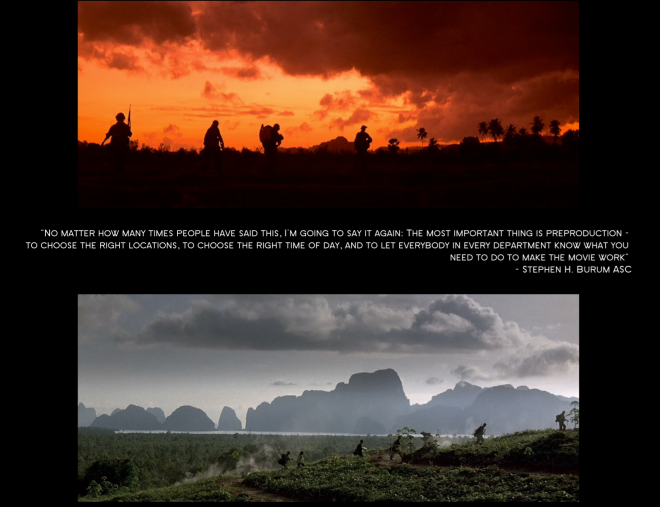 No matter how many times people have said this, I’m going to say it again: The most important thing is preproduction – to chose the right locations, to chose the right time of day, and to let everybody in every department know what you need to do to make the movie work.
No matter how many times people have said this, I’m going to say it again: The most important thing is preproduction – to chose the right locations, to chose the right time of day, and to let everybody in every department know what you need to do to make the movie work.
– Stephen H. Burum ASC
– Harris Savides ASC
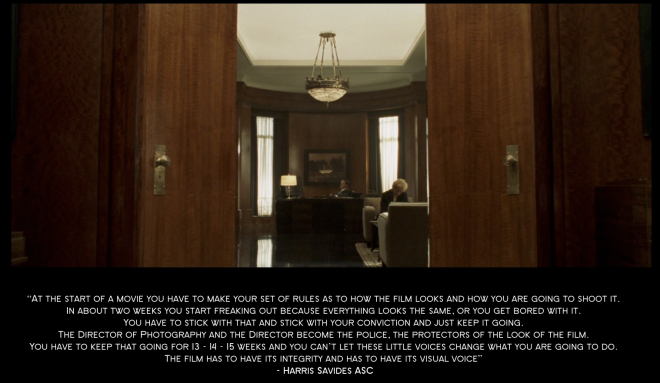 At the start of a movie you have to make your set of rules as to how the film looks and how you are going to shoot it. In about two weeks you start freaking out because everything looks the same, or you get bored with it. You have to stick with that and stick with your convictions and just keep going. The Director o Photography and the Director become the police, the protectors of the look of the film. You have to keep that going for 13-14-15 weeks and you can’t let these little voices change what you are going to do. The film has to have it’s integrity and has to have its visual voice.
At the start of a movie you have to make your set of rules as to how the film looks and how you are going to shoot it. In about two weeks you start freaking out because everything looks the same, or you get bored with it. You have to stick with that and stick with your convictions and just keep going. The Director o Photography and the Director become the police, the protectors of the look of the film. You have to keep that going for 13-14-15 weeks and you can’t let these little voices change what you are going to do. The film has to have it’s integrity and has to have its visual voice.
– Harris Savides ASC
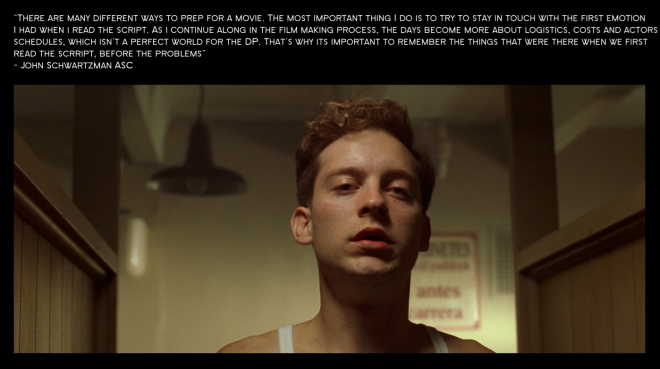 There are many different ways to prep for a movie. The most important thing is to try to stay in touch with the first emotion I had when I read the script. As I continue along in the film making process, the days become more about logistics, costs and actors schedules, which isn’t perfect for the DP. That’s why it’s important to remember the things that were there when we first read the scripts, before the problems.
There are many different ways to prep for a movie. The most important thing is to try to stay in touch with the first emotion I had when I read the script. As I continue along in the film making process, the days become more about logistics, costs and actors schedules, which isn’t perfect for the DP. That’s why it’s important to remember the things that were there when we first read the scripts, before the problems.
– John Shwartzman ASC
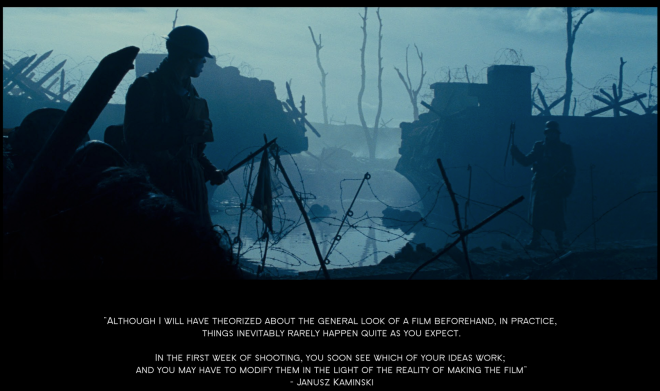 Although I will have theorised about general look of a film beforehand. In practice, things inevitably rarely happen quite as you expect. In the first week of shooting, you soon see which of your ideas work, and you may have to modify them in the light of the reality of making the film
Although I will have theorised about general look of a film beforehand. In practice, things inevitably rarely happen quite as you expect. In the first week of shooting, you soon see which of your ideas work, and you may have to modify them in the light of the reality of making the film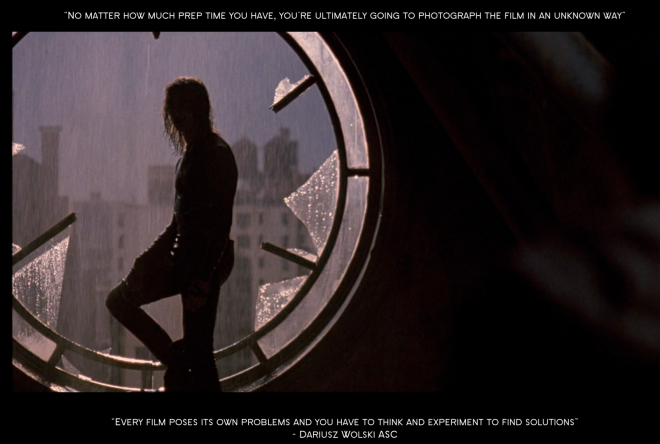 No matter how much prep time you have, you’re ultimately going to photograph the film in an unknown way. Every film poses its own problems and you have to think and experiment to find a solution.
No matter how much prep time you have, you’re ultimately going to photograph the film in an unknown way. Every film poses its own problems and you have to think and experiment to find a solution.
– Dariusz Wolski ASC
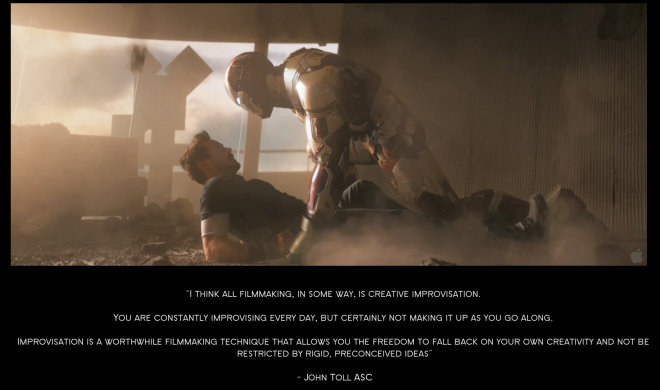 I think all filmmaking, in some way, is creative improvisation. You are constantly improvising every day, but certainly not making it up as you go along. Improvisation is a worthwhile filmmaking technique that allows you the freedom to fall back on your own creativity and not be restricted by rigid preconceived ideas
I think all filmmaking, in some way, is creative improvisation. You are constantly improvising every day, but certainly not making it up as you go along. Improvisation is a worthwhile filmmaking technique that allows you the freedom to fall back on your own creativity and not be restricted by rigid preconceived ideas
– John Toll ASC
– Jan De Bont ASC
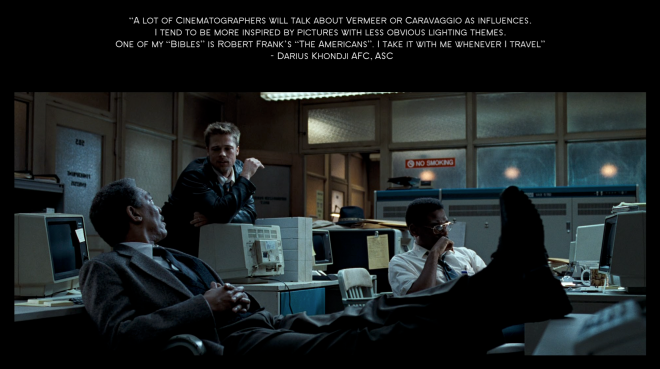 A lot of cinematographers will talk about Vermeer or Caravaggio as influences. I tend to be more inspired by pictures with less obvious lighting themes. One of my ‘bibles’ is Robert Frank’s “The Americans” I take it with me whenever I travel.
A lot of cinematographers will talk about Vermeer or Caravaggio as influences. I tend to be more inspired by pictures with less obvious lighting themes. One of my ‘bibles’ is Robert Frank’s “The Americans” I take it with me whenever I travel.
– Darius Khondji AFC, ASC
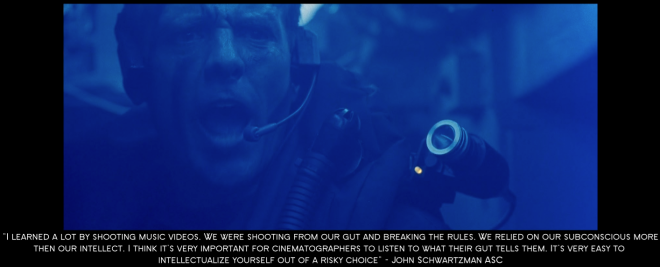 I learned a lot by shooting music videos. We were shooting from our gut and breaking the rules. We relied in our subconscious more than our intellect. I think it is very important for cinematographers to listen to what their gut tells them if it is very easy to intellectualise yourself out of a risky choice
I learned a lot by shooting music videos. We were shooting from our gut and breaking the rules. We relied in our subconscious more than our intellect. I think it is very important for cinematographers to listen to what their gut tells them if it is very easy to intellectualise yourself out of a risky choice
– John Shwartzman ASC
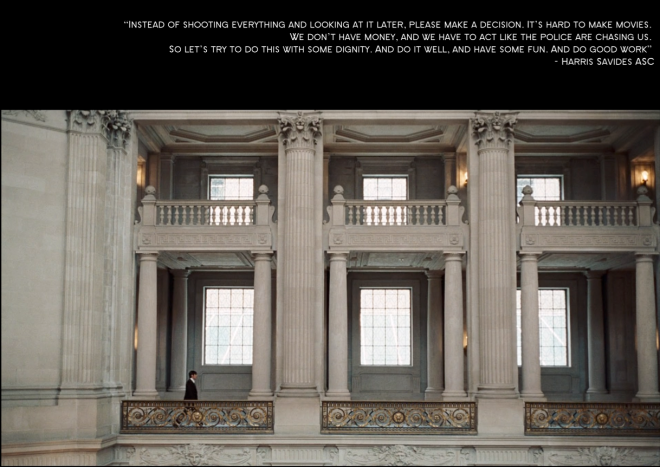 Instead of shooting everything and looking at it later, please make a decision. It’s hard to make movies. We don’t have money, and we have to act like the police are chasing us. So let’s try to do this with some dignity and do it well, and have some fun and do good work.
Instead of shooting everything and looking at it later, please make a decision. It’s hard to make movies. We don’t have money, and we have to act like the police are chasing us. So let’s try to do this with some dignity and do it well, and have some fun and do good work.
– Harris Savides ASC
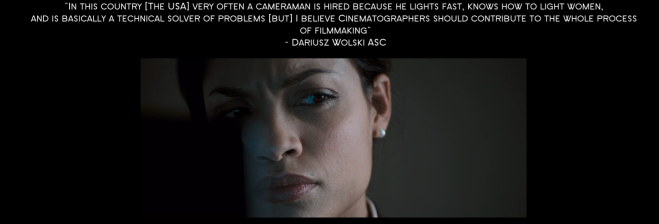 In this country [the USA] very often a cameraman is hired because he lights fast, knows how to light women, and is basically a technical solver of problems [but] I believe cinematographers should contribute to the whole process of filmmaking
In this country [the USA] very often a cameraman is hired because he lights fast, knows how to light women, and is basically a technical solver of problems [but] I believe cinematographers should contribute to the whole process of filmmaking
– Dariusz Wolski ASC
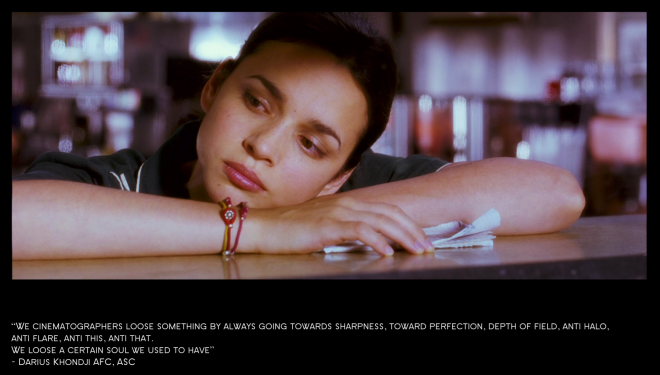 We cinematographers loose something by always going towards sharpness, toward perfection, depth of field, anti halo, anti flare, anti this, anti that. We loose a certain soul we used to have”
We cinematographers loose something by always going towards sharpness, toward perfection, depth of field, anti halo, anti flare, anti this, anti that. We loose a certain soul we used to have”
– Darius Khondji AFC, ASC
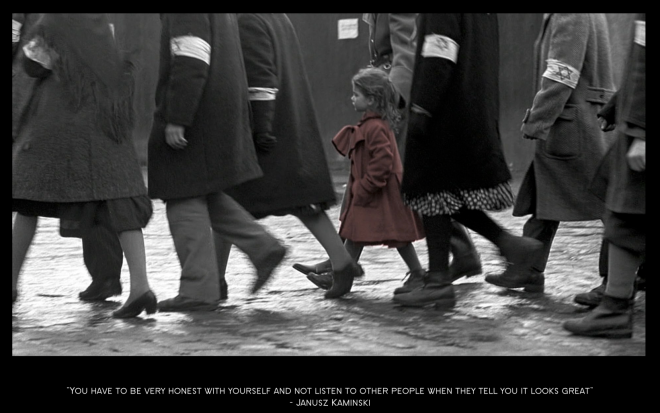 You have to be very honest with yourself and not listen to other people when they tell you it looks great
You have to be very honest with yourself and not listen to other people when they tell you it looks great On Every movie, you’ve got to balance the art, the craft and the economics, and they’re all equally important. You do the best you can every day, every shot. A lot of what you choose to do is an economic choice
On Every movie, you’ve got to balance the art, the craft and the economics, and they’re all equally important. You do the best you can every day, every shot. A lot of what you choose to do is an economic choice
– Stephen H. Burum ASC
Cinematographers on Collaboration
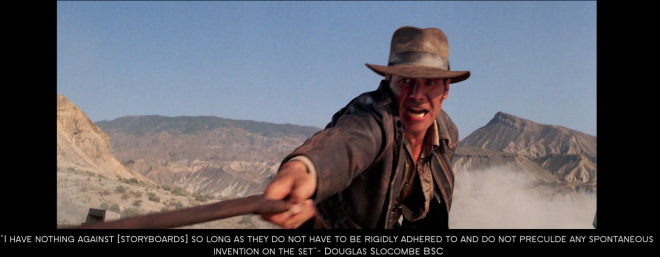 I have nothing against [storyboards] as long as they do not have to be rigidly adhered to and do not percale any spontaneous invention on the set
I have nothing against [storyboards] as long as they do not have to be rigidly adhered to and do not percale any spontaneous invention on the set
– Douglas Slocombe BSC
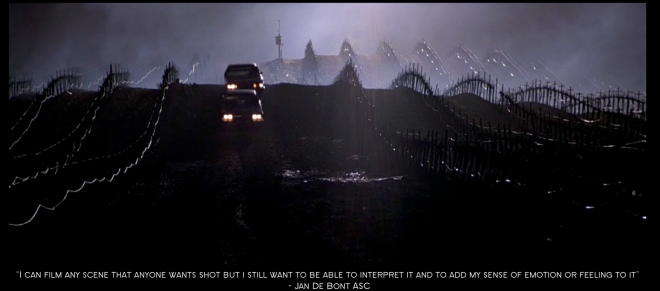 I can film any scene that anyone whats shot but I still want to be able to interpret it and to add my sense of emotion or feeling to it
I can film any scene that anyone whats shot but I still want to be able to interpret it and to add my sense of emotion or feeling to it
– Jan De Bont ASC
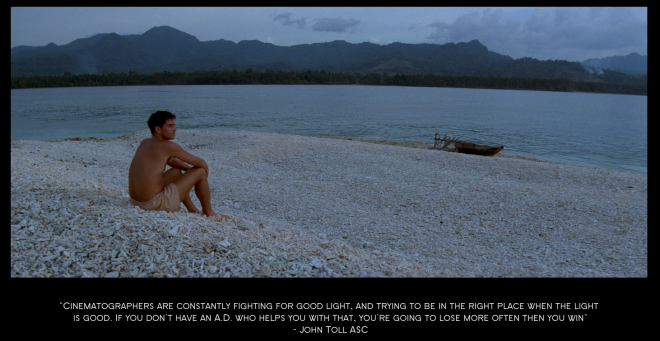 Cinematographers are constantly fighting for good light, and trying to be in the right place when the light is good. If you don’t have an A.D. who helps you with that, you’re going to lose more often than you win
Cinematographers are constantly fighting for good light, and trying to be in the right place when the light is good. If you don’t have an A.D. who helps you with that, you’re going to lose more often than you win
– John Toll ASC
 As a cinematographer you have to respect elements like De Niro’s use of body language and gesture, and use those elements in framing shots. If you don’t do that, you’re cheating the actor and you’re cheating the audience. As a cinematographer, you have to recognize what the dramatic values are in order to show them.
As a cinematographer you have to respect elements like De Niro’s use of body language and gesture, and use those elements in framing shots. If you don’t do that, you’re cheating the actor and you’re cheating the audience. As a cinematographer, you have to recognize what the dramatic values are in order to show them.
– Stephen H. Burum ASC
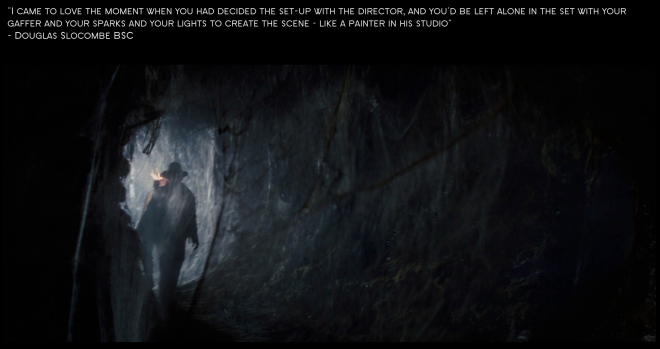 I came to love the moment when you had decided the set-up with the director, and you’d be left alone in the set with your gaffer and your sparks and your lights to create the scene – like a painter in his studio
I came to love the moment when you had decided the set-up with the director, and you’d be left alone in the set with your gaffer and your sparks and your lights to create the scene – like a painter in his studio
– Douglas Slocombe BSC
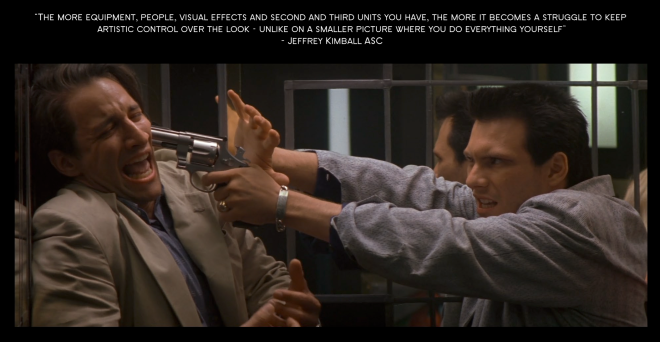 The more equipment, people, visual effects and second and third units you have, the more it becomes a struggle to keep artistic control over the look – unlike on a smaller picture where you do everything yourself
The more equipment, people, visual effects and second and third units you have, the more it becomes a struggle to keep artistic control over the look – unlike on a smaller picture where you do everything yourself
–Jeffrey Kimball ASC
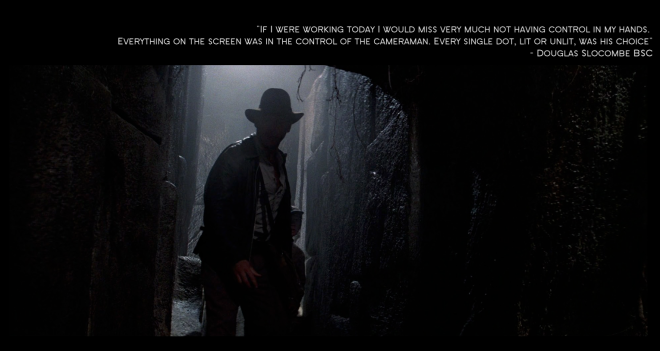 If I were working today I would miss very much not having control in my hands. Everything on the screen was in the control of the cameraman, every single dot, lit or unlit, was his choice
If I were working today I would miss very much not having control in my hands. Everything on the screen was in the control of the cameraman, every single dot, lit or unlit, was his choice
– Douglas Slocombe BSC
Cinematographers on Formats and Framing
– John Shwartzman ASC
– Paul Cameron ASC
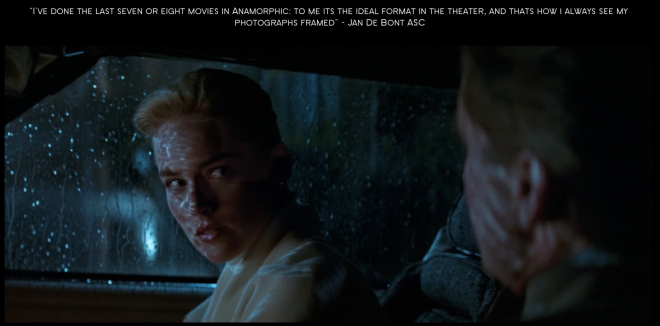 I’ve done the last seven or eight movies in anamorphic. To me it’s the ideal format in the theatre, and that’s how I always see my photographs framed
I’ve done the last seven or eight movies in anamorphic. To me it’s the ideal format in the theatre, and that’s how I always see my photographs framed
– Jan De Bont ASC
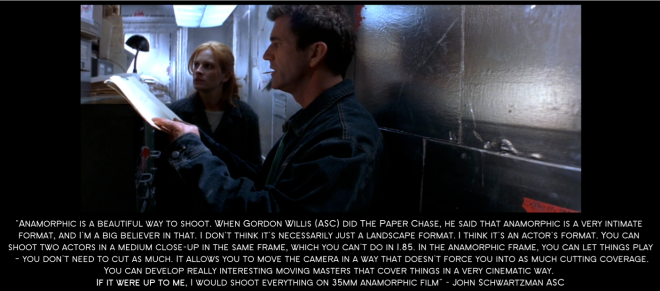 Anamorphic is a beautiful way to shoot. When Gordon Willis (ASC) did The Paper Chase, he said that anamorphic is a very intimate format, and I’m a big believer in that. I don’t think it’s necessarily just a lands ape format. I think it’s an actor format. You can shoot two actors in a medium close-up in the same frame, which you can’t do in 1.85. In the anamorphic frame, you can let things play – you don’t need to cut as much. It allows you to move the camera in a way that doesn’t force you into as much cutting coverage. You can develop really interesting moving masters that cover things in a very cinematic way. If it were up to me, I would shoot everything on 35mm anamorphic film
Anamorphic is a beautiful way to shoot. When Gordon Willis (ASC) did The Paper Chase, he said that anamorphic is a very intimate format, and I’m a big believer in that. I don’t think it’s necessarily just a lands ape format. I think it’s an actor format. You can shoot two actors in a medium close-up in the same frame, which you can’t do in 1.85. In the anamorphic frame, you can let things play – you don’t need to cut as much. It allows you to move the camera in a way that doesn’t force you into as much cutting coverage. You can develop really interesting moving masters that cover things in a very cinematic way. If it were up to me, I would shoot everything on 35mm anamorphic film
– John Shwartzman ASC
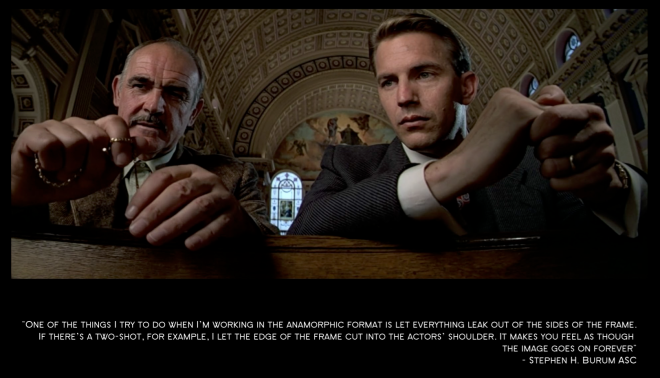 One of the things I try to do when I’m working in the anamorphic format is let everything leak out of the sides of the frame. If there’s a two-shot, for example, I let the age of the frame cut into the actors’ shoulder. It make you feel as though the image goes on forever.
One of the things I try to do when I’m working in the anamorphic format is let everything leak out of the sides of the frame. If there’s a two-shot, for example, I let the age of the frame cut into the actors’ shoulder. It make you feel as though the image goes on forever.
– Stephen H. Burum ASC
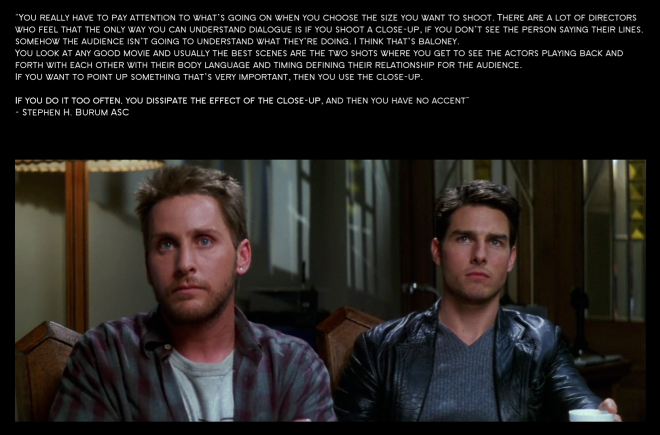 You really have to pay attention to what’s going on when you chose the size you want to shoot. There are a lot of directors who feel that the only way you can understand dialogue is if you shoot a close-ip. If you don’t see the person saying their lines, showehow the audience isn’t going to understand what they’re doing. I think it’s baloney. You look at any good movie and usually the best scenes are the two shots where you get to see the actors playing back and forth with each with their body language and timing defining their relationship for the audience. If you want to pint up something that’s very important, then you use the close-up. If you do it too often, you dissipiate the effect of the close-up, and then you have no accent
You really have to pay attention to what’s going on when you chose the size you want to shoot. There are a lot of directors who feel that the only way you can understand dialogue is if you shoot a close-ip. If you don’t see the person saying their lines, showehow the audience isn’t going to understand what they’re doing. I think it’s baloney. You look at any good movie and usually the best scenes are the two shots where you get to see the actors playing back and forth with each with their body language and timing defining their relationship for the audience. If you want to pint up something that’s very important, then you use the close-up. If you do it too often, you dissipiate the effect of the close-up, and then you have no accent
– Stephen H. Burum ASC
It is important to remember that visual consistency is essential – you can’t suddenly start using very long lenses if you’ve been using wide lenses (unless, of course, you want the jarring effect this creates.) At the same time it can become monotonous if you don’t occasionally temper that consistency
Cinematographers On Movement
– Harris Savides ASC
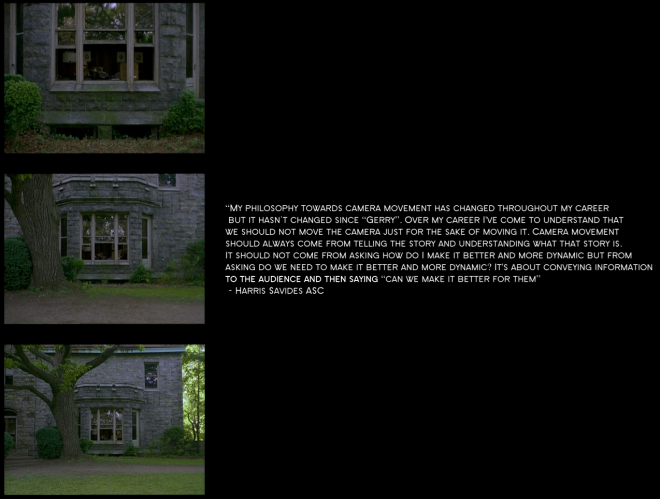 My philosophy towards camera movement has changed throughout my career but it hasn’t changed since ‘Gerry’. Over my career I’ve come to understand that we should not move the camera just for the sake of moving it. Camera movement should always come from telling the story and understanding what that story is. It should not come from asking how do I make it better and more dynamic but from asking do we need to make it better and more dynamic? It’s about conveying information to the audience and then saying “Can we make it better for them”
My philosophy towards camera movement has changed throughout my career but it hasn’t changed since ‘Gerry’. Over my career I’ve come to understand that we should not move the camera just for the sake of moving it. Camera movement should always come from telling the story and understanding what that story is. It should not come from asking how do I make it better and more dynamic but from asking do we need to make it better and more dynamic? It’s about conveying information to the audience and then saying “Can we make it better for them”
– Harris Savides ASC
 I really like handheld and not necessarily in a chase. Even in straight dramatic scenes just with two people talking. It gives you really intensity, just by looking a little rough.
I really like handheld and not necessarily in a chase. Even in straight dramatic scenes just with two people talking. It gives you really intensity, just by looking a little rough.
– Jan De Bont ASC
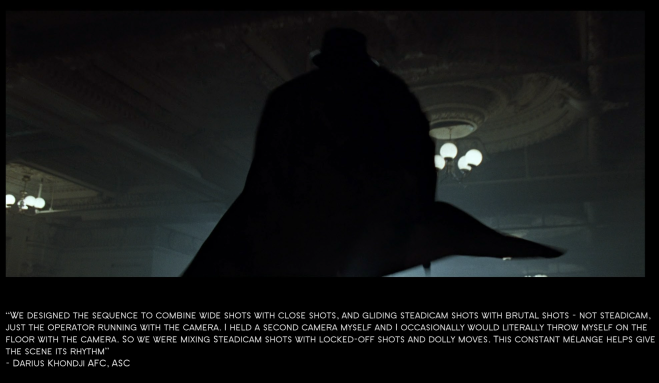 We designed the sequence to combine wide shots with close shots, and gliding steadicam shots with brutal shots – not steadicam, just the operator running with the camera. I held a second camera myself and I occasionally would literally throw myself on the floor with the camera. So we were mixing steadicam shots with locked-off shots and dolly moves, this constant melange helps give the scene its rhythm.
We designed the sequence to combine wide shots with close shots, and gliding steadicam shots with brutal shots – not steadicam, just the operator running with the camera. I held a second camera myself and I occasionally would literally throw myself on the floor with the camera. So we were mixing steadicam shots with locked-off shots and dolly moves, this constant melange helps give the scene its rhythm.
– Darius Khondji AFC ASC
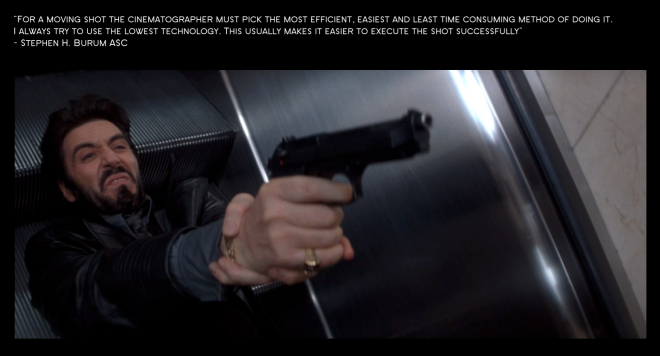 For a moving shot the cinematographer just pick the most efficient, easiest and least time consuming method of doing it. I always try to use the lowest technology. This usually makes it easier to execute the shot successfully
For a moving shot the cinematographer just pick the most efficient, easiest and least time consuming method of doing it. I always try to use the lowest technology. This usually makes it easier to execute the shot successfully
– Stephen H. Burum ASC
In the 2nd part we concentrate on lighting (and smoke). “A cinematographer is a visual psychiatrist – moving an audience through a movie … making them think the way you want them to think, painting pictures in the dark.” Gordon Willis, ASC.
In the 3rd and final part we explore lenses, filters, colors and film vs digital
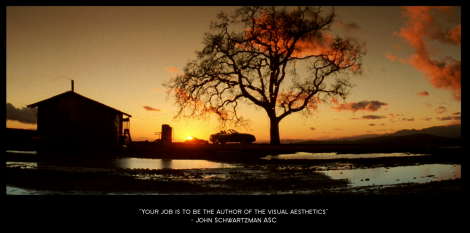
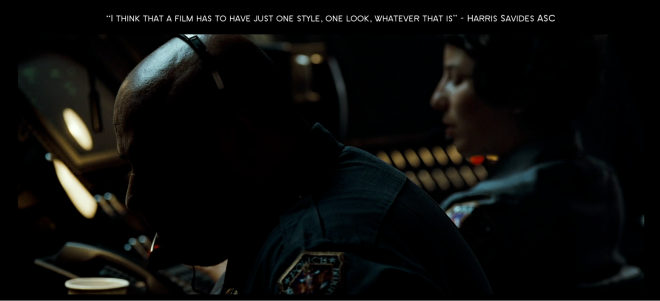
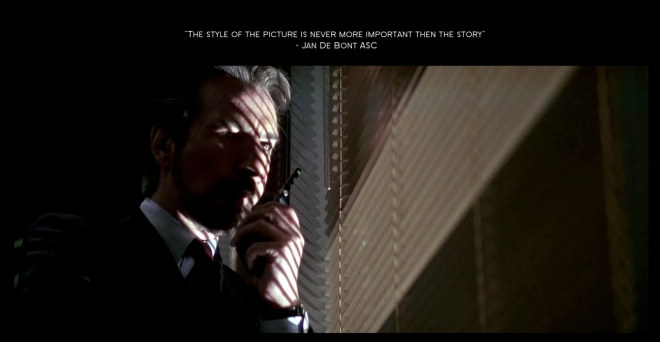
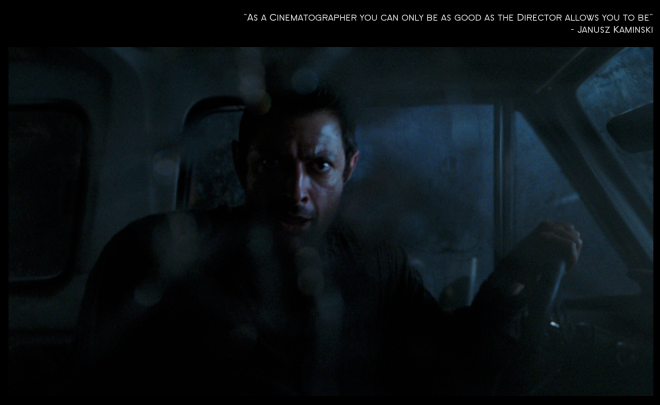
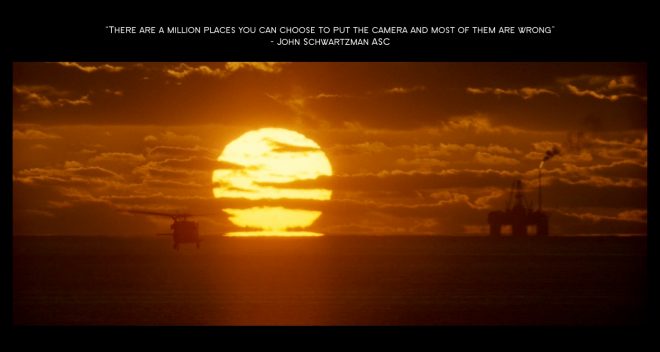

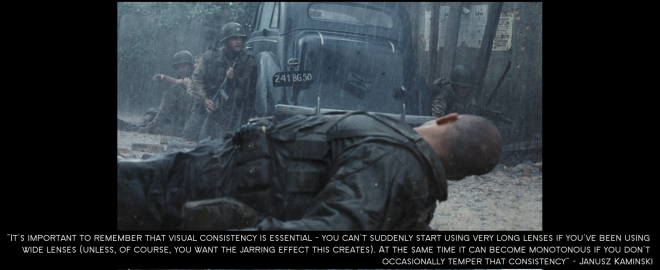
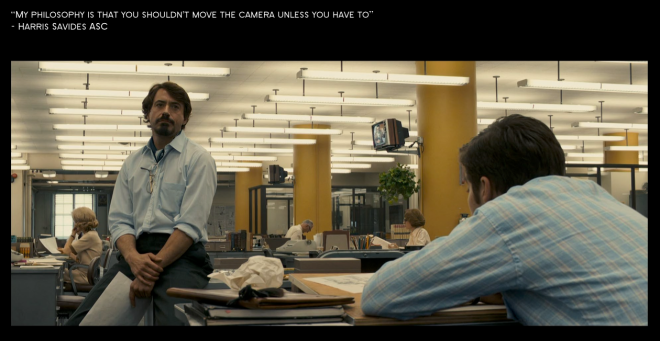


Yorumlar
Yorum Gönder